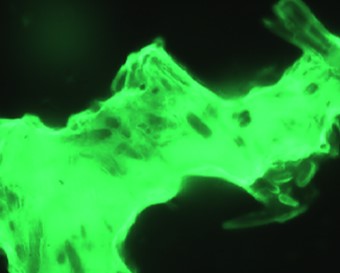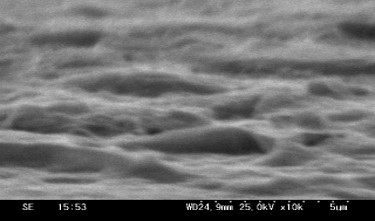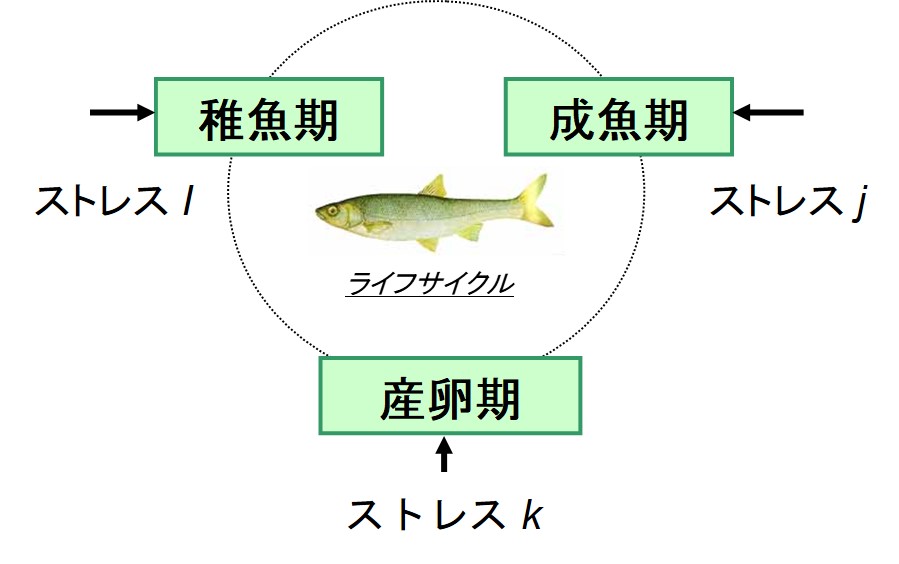基礎研究
Fundamental Research
研究概要
水を浄化するあるいは循環利用する場合には水中に存在するいろいろな汚染物質を確実に分解・無害化して除去する必要があります. 榊原研究室では新しい分解技術Bio-Fenton法の開発に取り組んでいます. 簡潔に言うと、生物が産生する過酸化水素と鉄化合物を用いて汚染物質を分解する技術です. Bio-Fenton法は従来の低コスト、省資源、省エネルギーの特徴を保持したまま、難分解性有害物質の浄化速度と浄化効率を格段に向上させる可能性があります. また、超高速で汚染物質を無害化する電気化学的促進酸化技術、微生物と電極を組合わせた生物膜電極、水素利用性微生物による地下水脱窒、水生生物を保護するためのライフサイクルリスクアセスメント(LCRA)、などの要素技術やアセスメント手法の基本原理とその可能性について検討を行います.
Research Summary
When purifying or recycling water, the complete decomposition and detoxification of various pollutants are required. Sakakibara Lab is working on the development of a new technology, Bio-Fenton process. This technology decomposes pollutants using iron catalyst and hydrogen peroxide produced by living organisms. Moreover, the process has the potential to significantly improve the purification rate and efficiency of persistent toxic substances while retaining the conventional low cost, resource saving, and energy saving characteristics. In addition, electrochemical advanced oxidation process (AOP) that detoxifies pollutants at extremely high rate, biofilm electrode that combines electrodes with microorganisms, groundwater denitrification by hydrogen bacteria, and life cycle risk assessment(LCRA) to protect aquatic life forms, etc. We examine the basic principles and possibilities of these elemental technologies.
研究トピックス
1. Bio-Fenton法の開発
2.電気化学的促進酸化技術の開発
3.水素利用脱窒法による水質浄化
4.リモートセンシングによる地表水の水質モニタリング
5.ライフサイクルリスクアセスメントの開発
Research Topics
1. Development of Bio-Fenton process
2. Development of electrochemical AOP
3. Water purification by denitrification process using hydrogen
4. Water quality monitoring of surface water by remote sensing
5.Development of life cycle risk assessment (LCRA)
研究のポイント
OHラジカルは酸化力が極めて高く、ほとんど全ての有機性汚染物質を分解することができます.植物、藻類、微生物などが産生する過酸化水素からOHラジカルを生成させる方法(Bio-Fenton法)と水電解によるオゾンからOHラジカルを生成させる方法(電気化学的促進酸化法)の可能性について検討します.Fig. 1は藻類(珪藻)がつくった過酸化水素が鉄触媒添加によってOHラジカルに変換される様子を検出用プローブ(APF)を用いて観察したものです.緑色の蛍光はOHラジカルの生成場所を示します.また、魚類等の雌性化の原因となるエストロゲン類を電極表面上にポリマー化させることにより、水中から除去できることが分かりました(Fig. 2).その他、地下水汚染が顕在化している硝酸は水素利用脱窒菌を用いることにより無害な窒素ガスに変換できることや、電極に当該微生物を固着させて通電すると硝酸が除去されることなど基礎研究により明らかになりました.その他、途上国の水源水質をモニタリングするために必要な人工衛星情報、水質と波長特性、周回頻度などについて調査しています.一方、水環境中の生物多様性を向上するには生物の視点に立ったアセスメントが必要であると考え、Fig. 3に示すような(魚類を対象とした)ライフサイクルリスクアセスメントを考案しました.

Fig. 1 珪藻からのOHラジカル生成.

Fig. 2 エストロゲンの集積.

Fig.3 LCRAの概念図.
(対象魚種15種/ストレス因子9種類)
Research Points
OH radicals have extremely high oxidizing potential and can decompose almost every organic pollutant. We investigate the possibility of generating OH radicals from hydrogen peroxide produced by plants, algae, microorganisms, etc. (defined as Bio-Fenton process) and OH radicals from ozone by water electrolysis(Electrochemical AOP). Fig. 1 shows how hydrogen peroxide produced by algae(diatom) is converted to OH radicals by adding an iron catalyst using a detection probe (APF). Green fluorescence indicates the location of OH radicals. It was also found that estrogens, which causes feminization of fish, can be removed from water by polymerizing them on the electrode surface (Fig. 2). In addition, basic research has revealed that nitrate, a common pollutant in groundwater in the world, can be converted to harmless nitrogen gas by using hydrogen-utilizing denitrifying bacteria, and that nitrate is removed when the microorganism is fixed to an electrode and activated by electric current. Furthermore, we are investigating artificial satellite information, water quality and wavelength characteristics, orbit frequency, etc. necessary for monitoring quality of water sources in developing and developed countries. On the other hand, we thought that a new assessment approach based on the viewpoint of living organisms is necessary in order to improve biodiversity in the aquatic environment, and proposed a life cycle risk assessment(for fish) as shown in Fig. 3.

Fig. 1 Generation of OH radicals from diatoms.

Fig. 2 Estrogen accumulation.

Fig. 3 Conceptual diagram of LCRA.
(15 target fish species/9 stress factors)